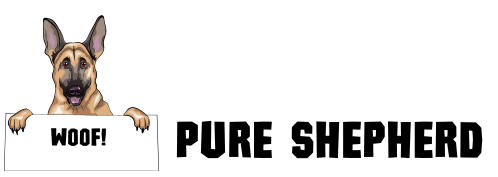Thinking about what to do when your dog dies is something you’ll rather not do. Unfortunately, though, that’s one harsh reality you really can’t avoid as a dog owner. It’s nature.
Saying goodbye is all you can do. And being a loving pet parent, you damn sure want to do it right. That’s what you’ll learn in this short article. Get to know all that there is about your dog’s death including the heartbreaking moment of handling his remains.
Let’s take a look.
Signs That My Dog Is Dying
If your dog is not hurt in an accident that causes their death you may not be aware of signs that they are coming to the end of their life. There could be various symptoms that you will notice as their life fades, or may you note notice them if you are not expecting their death. Perhaps after their death you will recognise them – hindsight is a wonderful thing. It may be the case that your dog has been suffering with an illness so you are more aware that their days may be limited, and relief is on the way.
Here are a few of the changes to look out for.
1. Lethargy
This can be one the earliest sign of that your dog may ill or indeed coming closer to their death. Essentially, your dog is too tired do anything other than just napping away hours on end. But it may be more specific than just being tied all the time.
Their choice of a napping place can also be very specific – somewhere secluded and quiet. You might not see them as often as you’re used to – they won’t be under your feet like they normally! And even if you do see them, that zest for life and enthusiasm just won’t be there. Things like playing together, going for walks, and munching on their favorite treat no longer a joy.
With time, the lethargy gets worse and basic activities like grooming and toileting become a problem. So you’ll find them defecating right where they are, perhaps suffering from incontinence, or close by. This is an advanced sign that your dog is dying.
2. Loss of Appetite
This goes hand in hand with lethargy above. When all your dog does is take naps all day, they are obviously going to have a hard time eating even the tastiest of foods. Even if they decide to take a bite, the amount eaten may be far less than what they usually eat.
They might suddenly become a picky eater not just with the type of food on offer, but food in general. For instance, they may only eat warmed up food or raw food. They might also eat only when you hand feed them, or when you place kibble on the floor right besides them – eating is just too hard.
At this time even the little that your dog eats might not be so helpful to him, either because they are vomiting the food or it is going right through them and the nutrients can’t be absorbed.
3. Changes to Gum Color
This is one of the more advanced signs of a dying dog. As your dog nears the end of their life their body is undergoing many changes which will, of course, affect their general appearance. Their gums are an area which can be prominently affected.
In a normal healthy dog, their gums are usually pink and moist. This is because of the availability of oxygenated blood passing through both the dog’s gums and the whole body. Health problems can interfere with their circulation leaving their gums looking paler.
With time, the whole mouth area is affected eventually turning white.
4. Loss of Co-ordination
Instead of the straight steps, you’ll find that your dog is a little wobbly whilst walking and collapses occasionally. This loss of coordination is not restricted to just when they are walking, you may find when they are lying down there is some involuntarily shaking.
You can help your dog here by providing them with somewhere comfortable and secure to prevent any injuries if they fall.
5. Breathing Difficulties
This is perhaps one of the hardest symptoms to see. You may also become aware of it when it’s quiet at home and they are lying down close to you. Some of those special quiet moments in today’s hustle and bustle.
Their breathing becomes labored and more of a chore as opposed to the smooth natural activity it’s supposed to be. You’ll notice your dog’s breathing becoming shallow and an increase in the time between each intake and outtake of air.
Towards the very end, your German Shepherd might even open and close his mouth as breathing through their nose becomes a harder for them – much like when you have a cold and can only breath through your mouth.
6. Having a Cold Body
When your German Shepherd is dying, their circulatory system will slow down and this this means that parts of your dog’s body will not get as much blood. This turns them cooler to the touch, even cold as blood plays a major role in keeping a dog warm.
Specifically, you may notice this in their paws as it become difficult to move blood to their extremities.
7. Incontenence
This is another sign of your dog is approaching their last moments, they may just be too tied to move outside and do their toilet or they simply aren’t able to control their bowel movements.
It can be hard to experience your dog suffering in this way and you’ll want to ensure their bedding (or whatever they are lying on) is as clean as possible. All you can do is support your dog as best you can.
They may have a bowel movement once they have died as their body relaxed. If you know that the end is close, as hard as it will be, you may wish to put some old towels underneath them.

What To Do If You Think It Is Time, and Your Dog Is Dying
1. Act As Normally As Possible
We all know that dogs are super sensitive – they know what kind of mood or mindset we are in – so if you can act as normally as possible it will provide some comfort for them. Keep things quiet, it’s not the time for introducing new people, places, pets or anything unusual.
Try to maintain their routine as best you can until that is not possible.
2. Be There For Your Dog
This is the time when your dog needs you the most, not just to clean up after them, feed and water them as normal, but for their emotional support too. Show them your caring side, pet them and use a soothing voice to calm them.
Dying around someone who really adores them is the best gift you can offer at this time.
3. Talk With Your Vet
You and your vet may have been working together for some time, especially if your dog is suffering from a medical condition. But even if it’s simply old age you can still talk to your vet for professional advice of how to care for your dog at the end of their life.
They can also advise you on what to do with matters such as pain relief and for euthanasia options.

What To Do If Your Dog Has Died
You have our sympathies if your beloved pet has died. It is very emotional and painful time.
If Your Dog Dies At The Vets
Your vet will be of great help if your dog passes away at their surgery. Hopefully you have already had some time to think about what you’d like to happen to your dog’s body.
Most animal funeral services will collect your dog’s body from the vets, but if you don’t wish to use that type of service typically your vet can also dispose of your dog’s body for you.
If your dog has been euthanised at the vet’s surgery you could also take your dog home for a burial – perhaps under a favorite tree or spot in the garden.
If Your Dog Dies At Home
If you dog dies at home you may have questions on the following topics:
Is Your Dog Dead?
Yes, you have to make sure that your four-legged friend is dead before anything else. If they are very ill and at the end of their life it is possible that very shallow breathing and a weak pulse might make you think they have died when they have not.
The most obvious way to determine if your dog is dead is to feel for their pulse of place your hand on their chest to feel for their heart beating. You can also look out for the following signs that are common once your dog has died;
- A release of bodily fluids
- A release of gas from the mouth – especially if you move them,
- Twitching as their muscles relax.
Additionally, you could have the vet take a look at your dog just to be sure.
Speak To Your Vet
Your vet can help with more than confirming their death. Depending on where you are, a vet can help with keeping your German Shepherd’s body as you make arrangements for what to do next.
Aside from that, your vet can also hook you up with a dog funeral service to handle either the burial or cremation of your friend.
Talk With Someone
Dealing with the loss of your dog is devastating and can be overwhelming to go through. Handling your dog’s remains might also be something you need help with, not just physically but also emotionally.
In that case, calling a close friend or family member can help ease the burden of dealing with your dog’s death. So don’t hesitate – speak with someone you know can handle this kind of situation and help you get through it.
There are books and counselling services that can help with your feelings and emotions when your pet dies.
Other Pets
Other pets in your household are going to that one of them is missing. Some of them might show signs of grieving and even lean towards separation anxiety.
Different pets will reacts in different ways. Other dogs in the household may come and lie with them or they may simply have a sniff and then walk away. Like humans they all have their own way of coping.
I’ll wrap these treasured memories in a blanket of my love,
and keep them for my best friend until we meet above.
Burial or Cremation
You can either choose to cremate of bury your dog’s remains – it’s all up to you. The vet can help you with with the options and they will often have leaflets from pet funeral service providers.
But given you’re at home you have to deal with the immediate matters of caring for your dog’s body;
- Grab some gloves. Remember bodily fluids are inevitable so you want to be prepared in advance.
- Get a large covering for wrapping around your dog’s body. It could be a towel, blanket, or anything that’s large enough.
- Place the remains on the covering and tightly wrap it around the dog. Move the covered remains into a plastic bag. Using several bags is definitely a good idea.
- Keep the remains somewhere cool – the garage or basement are great options. This shouldn’t be more than 4 to 6 hours.
You can choose to handle the burial part by yourself by having your dog’s final resting place in your home. But before you do that, be sure to check what the local regulations say about pet burial.
If all is clear with home burial be sure to:
- Dig the grave where you aren’t likely to dig up again.
- Mark the grave’s site.
- Ensure that you dig at least 3 feet deep.
- you may wish to bury their favorite toy or ball with them.
You may like to have a short ceremony to say farewell to your dog. It can be comforting to do so and say a few words.






